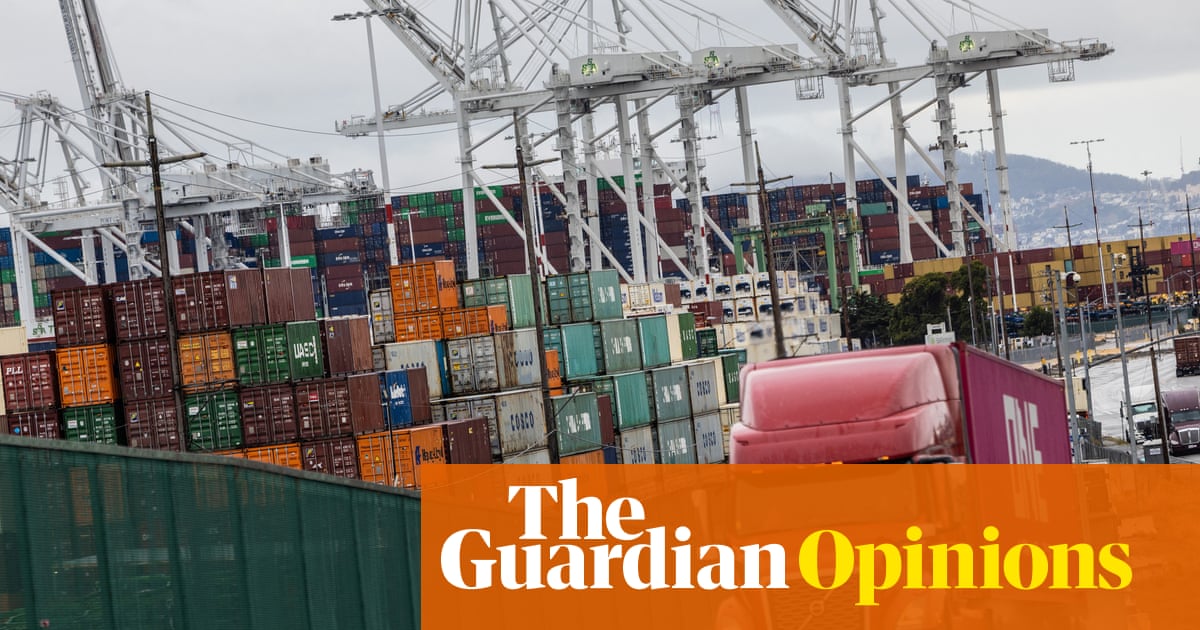On Sunday night, the US announced that it wascutting tariffs on Chinese importsfrom 145% to 30%, for 90 days, and the Chinese are dropping tariffs on US goods from 125% to 10%, also for 90 days.
The stock market soared on the news. (Anyone with inside knowledge of the deal could have made a killing.)
But what’s the ultimate goal here? What happens over the next 90 days?
It’s impossible to know what’s in Donald Trump’s mind (other than an insatiable thirst for power and money), but his trade and manufacturing adviser, Peter Navarro, says the “bigger picture is restoring the American manufacturing base”.
In 1970, more than a quarter of US workers held jobs in the manufacturing sector. Today, it’s only about8%. The Trump regime says sweeping tariffs will reverse this decades-long decline.
The president also promises torevive the US coal industry. Last month he issued an executive order to rescind regulations limiting coal development. Last week, he evenordered federal agenciesto stop considering the economic damage caused by coal and other carbon emissions when writing regulations. And he’s doing whatever he can to destroy green energy – solar and wind.
Manufacturing? Coalmining?
These sorts of jobs won’t make America great again. They’ll make American workers sickened, injured and killed on the job again.
I was secretary of labor. I saw close up how awful most of these jobs are. I met workers who had lost limbs in manufacturing jobs because machines they were cleaning or repairing accidentally started up. Others I met suffered carpal tunnel injuries from repetitive motions on assembly lines.
Child labor was – and still is – a pervasive problem. So, too, with dangerous sweatshops crammed with people working for subminimum wages (if they’re lucky enough to be paid at all).
And mining? I met mine workers with black lung disease from exposure to coal dust. Despite being on the decline after the 1970s, black lung hasbeen on the risefor two decades. Changes in mining technology have let mine owners dig deeper, exposing miners to even more highly toxic silica.
The reason many working-class Americans want manufacturing and mining to return is not because they loved the work. In most cases it was grueling and dangerous or mind-numbingly boring.
It’s because that work paid far better than the service jobs in fast-food and retail outlets, hospitals and hotels that many have been forced to take in their absence.
And the reason those manufacturing and mining jobs paid far better was because they were unionized. Unions gave workers in manufacturing and mining the bargaining leverage they needed to force employers to offer better pay (along with more job security and safer working conditions).
But since the Reagan years, corporations have been busting unions. In the 1960s, a third of all workers in the private sector were unionized. Today, just6% are.
And if there’s one thing Trump and his croniesdon’twant, it’s unions giving workers more bargaining power. He’sgutted the National Labor Relations Board,eviscerated Osha, and is filling the Department of Labor with corporate stooges.
So even if it werepossibleto restore manufacturing and mining to the US – even if we stopped foreign trade and forced US consumers to pay enormous sums for stuff made here, even if we filled the atmosphere with carbon, even if we prevented new technologies (including artificial intelligence) from doing the manufacturing and mining jobs that returned – the American working class would be no better off than they are now, if their pay is still in the cellar.
A return of manufacturing and mining jobs won’t make Americans great again. Good-paying jobs will.
The easiest and best way to raise the pay of working-class Americans is to 1 strengthen unions, 2 raise the minimum wage (which hasn’t been increased since 2009), 3 expand the earned income tax credit (a wage subsidy) for lower-income workers and 4 institute a universal basic income.
Will Trump do any of these things? No chance in hell.
Robert Reich, a former US secretary of labor, is a professor of public policy emeritus at the University of California, Berkeley. He is a Guardian US columnist. His newsletter is atrobertreich.substack.com
